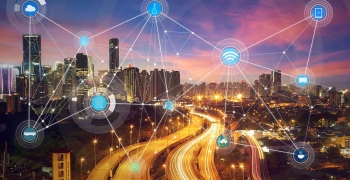Since the dawn of the first industrial revolution, factory chimneys have expelled millions of tons of toxic gases into the atmosphere. Roughly three centuries and an equal number of industrial revolutions later, we are at a tipping point where industrial processes and fossil fuel combustion together accounted for 78% of the rise in total greenhouse gas emissions between 1970 and 2011. The impact of this dramatic transformation is evident from an ongoing temperature analysis by NASA, which reported that the average global temperature has increased by a little over 1 degree Celsius since 1880. Hidden inside this apparently harmless information is the fact that about two-thirds of the warming has happened since 1975, a dramatically elevated rate of roughly 0.15-0.20 degree Celsius per decade. With global carbon footprints increasing at a steep rate, while carbon emission allowances narrow even further, industries are left with no choice but to revitalize their commitments towards sustainability through an “actions speak louder than words” approach. To achieve a Net Zero Carbon future by 2050, the ability to engineer and develop net zero products thus becomes paramount.
What are Net-Zero Products?
Overall, Net Zero refers to the goal of reducing greenhouse gas emissions to zero by balancing the amount released into the atmosphere from industrial sources with the amount that is removed and stored in carbon sinks. As greenhouse gases are the primary cause of global warming, an unabated rise in their emissions can spell catastrophic climate change for the world at large.
Net-Zero by 2050 – A Historical Perspective
In an act of game-changing legislature, the UK became the first major economy to advocate for net-zero. They advocated for changes to the long-term targets in the Climate Change Act of 2008, shifting it to the goal we all know today as net-zero by 2050. This was in accordance with the Paris Agreement, a binding global treaty on climate change mitigation, adaptation, and related financing. While the UK was the first economy to do so, as of January 2021, five countries – Denmark, France, Hungary, Sweden, and New Zealand – have also passed Net Zero legislations. Additionally, in its European Green Deal for 2019, the European Union took a major initiative by enumerating a net-zero target for 2050, further cementing its stance on sustainable development Meanwhile, other countries have either revised their Nationally Determined Contributions (NDC), proposed new legislation, or shown the desire to achieve net-zero by 2050. A particularly prominent example came in the form of President Xi Jinping announcing in 2020 that China would strive to become net carbon-neutral by the year 2060. As the world’s largest emitter of carbon emissions, if China were to achieve this goal, it would be an immeasurable contribution towards global carbon neutrality. India is also considering ways to meet the 2050 target, and there are discussions among senior bureaucrats and responsible ministries on whether this can be achieved by 2047, the centenary of its independence. While such a measure would involve a major overhaul of its coal-fired economy, the country seems to be gearing up to meet the challenges involved in the transition.
Towards Net Zero Products – A Reality Within Reach
Creating a truly Net Zero future through the adoption of Net Zero products involves leveraging new opportunities and overcoming challenges inherent to legacy industrial structures and processes. A switch to renewable energy resources (solar, wind, and water) for power generation is therefore a key step here, by directly reducing carbon emissions and as the most visible way for industries to underscore their commitment to a sustainable future. Additional investments on innovative energy solutions that are both technologically viable and offer an economical alternative for conventional fuel-dependent sectors would have a further significant impact in this direction.
Sustaining the Future – Towards a Net Zero Tomorrow
With the global movement for Net Zero growing ever stronger, a sustainable economic future – especially one in a post-COVID world – is one that has witnessed industries rise to the occasion. Several companies have already put their best foot forward and are leveraging available engineering expertise, global experience, and resources to address the challenges in ensuring a sustainable future. Significant investments are underway in low-carbon engineering applications, with a focus on pioneering new solutions and products that can help businesses achieve Net Zero at a rapid pace.





